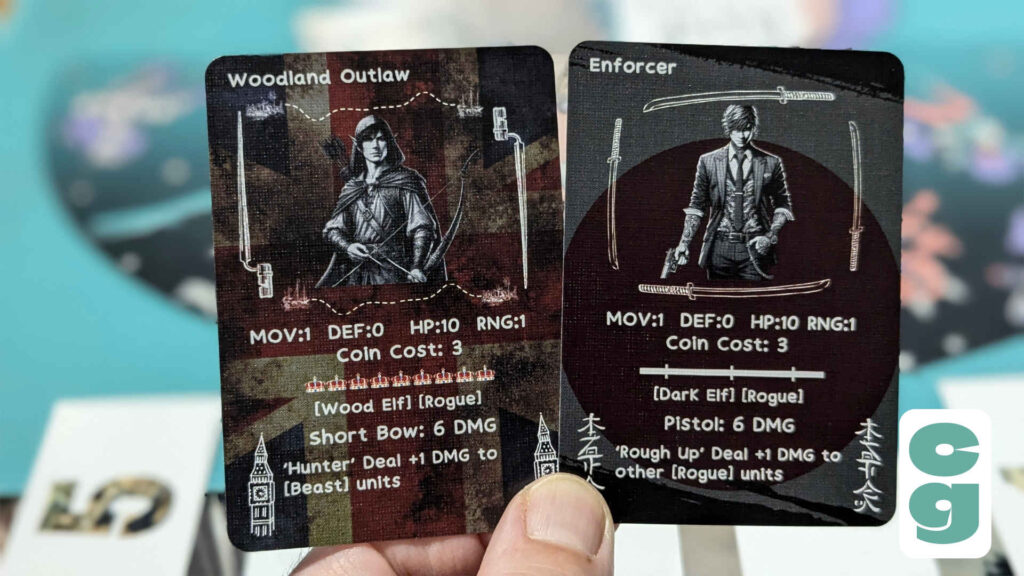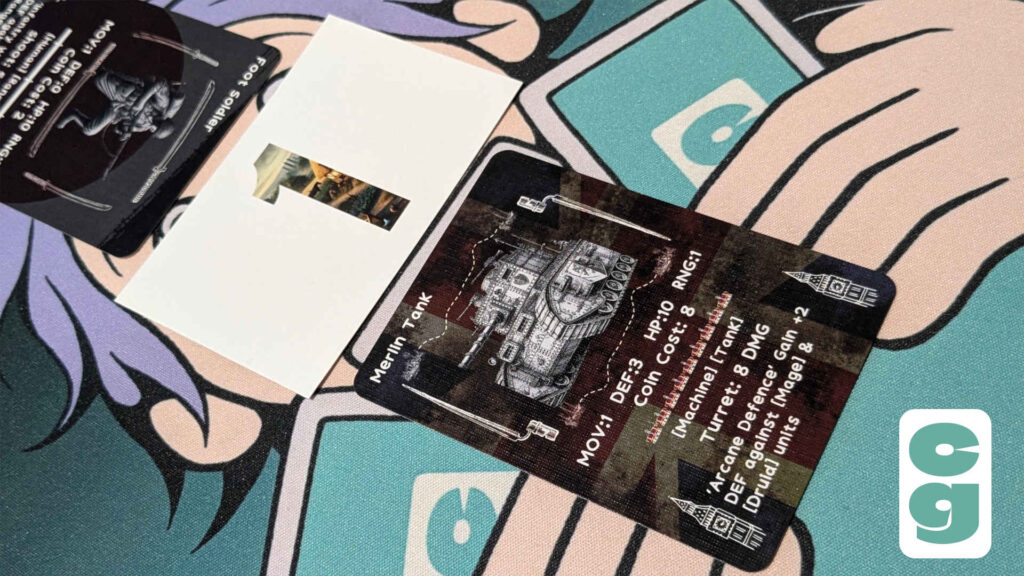The Trading Card Game (or TCG) sector has arguably never been healthier, or as big in terms of mainstream awareness. Though Magic: The Gathering‘s release in 1993 resulted in a veritable flood of collectible card games (or CCGs, a term used interchangeably with TCG) for several years, there’s no doubt that the sector very much remained the preserve of the hardcore gamer for quite some time. Games such as Pokémon and Yu-Gi-Oh! attracted younger players to TCGs, and, along with Magic, have endured for decades.
Now TCGs can be found in most non-specialist, big name stores, with games such as Disney Lorcana and Star Wars Unlimited attracting even more mainstream attention and widening the scope of the market further. Games of various scales continue to support their own dedicated fanbases; titles such as Altered and Achroma prove that smaller teams, without big name licenses, can compete with massive, multi-million dollar corporations on gameplay, innovation, and even production values. Players are truly spoiled for choice; it’s an excellent time to be a card gamer, for sure.
If you’ve ever thought that maybe you could design a game yourself, you’re not alone; that’s what Ryan Kelly, an ambitious, first time designer has done, with his self-designed and produced title, Empires Out of Time. Let’s check it out!
Table of Contents
ToggleWhat is Empires Out of Time?

Featuring five varied, international factions, Empires Out of Time may look like a historical game, but don’t be fooled; its setting is of a ravaged, post-apocalyptic world blighted by a cataclysmic event in the mid-21st century, which sees survivors reshaping the world using advanced technology and magic, restoring various empires to their past glory. British, Roman, Japanese, Norse, and Egyptian forces fight for domination, and it’s these factions which make up each of the five starter decks in the game.
At its core and in the simplest terms, Empires Out of Time is a card game focused around combat and economic superiority, with players accruing coins and gems each turn; coins to buy units to deploy, and gems to use action cards, which either help their own Empire, or hinder their opponents (sometimes both).
To win, players must reduce their opponent’s base to 0 HP, with each base starting at 20 HP and having a defense value of 5.
How To Play Empires Out of Time

Each player has a hand of seven cards, and on each turn they first earn five coins and five gems, then spend them on their units and other card types. Units (two examples of which you can see above) have a coin cost, and are played in one of five spaces on the battlefield; they also have other stats, such as attack, defense, movement, HP, and range. Units also have tags which specify their race and class; they may also have a further ability. The Woodland Outlaw shown above has an ability named “Hunter,” and the Enforcer’s ability is named “Rough Up.” The effect of these abilities is specified on each card.

Cards that cost gems fall into one of four types: upgrade cards, which remain in play until the start of the current player’s next turn; action and event cards which enable single use effects on a player’s turn; and traps, which can be played during an opponent’s turn, as long as the Gem cost can be paid. Examples of each, alongside two different units, can be seen in the above image.
Coins and gems can be saved and accrue over multiple turns, so as to afford the more expensive cards in hand. For example, the Merlin Tank in the above image costs eight coins to play, so you’ll need to build up coins in order to play it.
Units can move from their space as long as they have a movement value of one or above; the number determines how many spaces they can move along the row. Each unit can move and attack once during a player’s turn.

Attacking another unit can be done if the opposing unit is in range; when opposite each other, the range is considered zero. If a unit is in the space marked 1 and its opposing unit is in space 2, the first unit can only attack the other if it has a range value of one or more. For example, the Merlin Tank above can attack the opposing Foot Soldier, as they are at a range of zero to each other. The Foot Soldier could also attack the Merlin Tank. As it has a range of one, the Merlin Tank could also attack a unit in space 2, but the Foot Soldier could not, as its range is zero.

To determine the outcome of an attack, simply use their damage value and subtract the defending unit’s Defense; the resulting number is the HP lost by the unit. Using the same units as in the previous example, we can see that the Merlin Tank deals eight damage, and the Foot Soldier has 0 defense. So the Foot Soldier would take the full eight HP of damage when attacked. If the Foot Soldier attacked the Merlin Tank, its five damage would come up against a defense value of 3, so it would only deal two HP of damage. When a unit is down to 0 HP (damage remains between turns), it is discarded.
If a unit is unopposed; that is to say, if it doesn’t have an enemy unit directly opposite, it may attack the opponent’s base directly, though an opposing unit with enough range may make a free move to block the attack and shift into the opposing space, therefore taking the attack meant for the base. Once an opponent’s base, which has a defense value of 5, is reduced to 0 HP, they lose.
Is Empires Out of Time a Good Game?

There’s a nicely tactical edge to Empires Out of Time, which feels a little bit like a classic, turn-based strategy video game distilled to its core mechanics. The mixture of historic, fantastical, and modern units gives it the ambience of a video game such as Age of Empires, where a variety of troops at different stages of development can end up clashing on the battlefield.
Despite being an independent, small-scale production, there’s some genuinely impressive touches, though in my copy the bookkeeping was a little laborious at times, given that dry wipe cards and markers needed to be used to track damage, HP, gem and coin values. However, it’s easy enough to use tokens, counters, or dice to substitute (and in fact, there’s a deluxe version of the game which does have tokens).

The cards themselves are very good quality, with a lightly textured finish (which should be apparent in the above image), and they feel especially resilient. The Comic Sans font used throughout the game and its rules will likely not be to the taste of all players, but the choice of font doesn’t hinder play or learning the game at all. The design of each card, with its Empire’s flag across a darkened background, a stock image to illustrate the card’s unit or represent its effect, is perfectly functional and, like the white text and other elements, easily readable at a glance too. Despite its small press, independent nature, Empires Out of Time is a thoughtfully produced game, with clear rules and straightforward gameplay that unfolds at a good pace.
Having been able to pit the British Empire deck against the Japanese in my time with the game, I’ve enjoyed the way that the game’s events, units, and abilities feel nicely thematic, as well as how the dual currency system works to ensure that players aren’t relying on drawing specific cards, like lands in Magic: The Gathering, or using valuable cards as resources as in, say, Disney Lorcana, Star Wars Unlimited, or Altered. It’s also possible to build your own decks, so you can refine and further personalize your experience with the game.

Designer Ryan Kelly has put an awful lot of thought into Empires Out of Time; so much so that there’s a whole book of lore behind the game, which is available separately, as well as a simple board game that can be played using the game’s cards, giving them multiple uses. My edition of the book was wrapped with bands and ties; opening it felt like gaining access to an ancient relic!
Kelly is even creating a tabletop RPG using the lore of Empires Out of Time as its backdrop; one thing’s for sure, he’s certainly not lacking in ambition to make use of the possibilities afforded by the game’s unique melding of historic, contemporary, and magical elements.
Part of the game’s charm is that each pack feels so bespoke and personal, rather than mass produced. Though it might be a little rough around the edges in places, Empires Out of Time’s lo-fi aesthetic, paired with genuinely good quality cards, surprisingly in-depth lore, and the handcrafted feel of its rules and packaging, means that you feel as if you’re part of an ecosystem that’s the sole creation of a passionate, dedicated indie creator.
Where Can I Buy Empires Out of Time?

As it is a small press, independently produced game, Empires Out of Time isn’t available from stores just yet; instead, it can be purchased directly from the publisher, at the game’s dedicated website, where you can check out a variety of editions and a choice of factions, as well as the board game which makes use of the cards from the card game itself. The impressively detailed book of lore, containing a wealth of information on the Empires Out of Time’s factions and its world’s various social, political, and religious elements, can be purchased from Amazon.
Have you designed or discovered a card game that you would like us to cover? Drop us a line at [email protected]; we’d love to hear from you!





